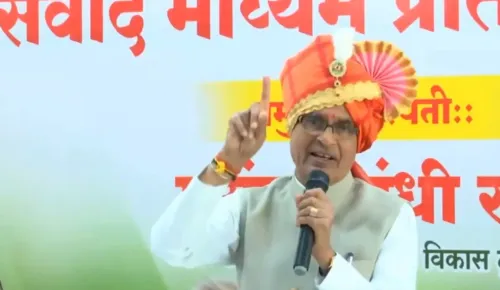Is India on Track to Surpass 6.8% GDP Growth in FY26?

Synopsis
Key Takeaways
- GDP growth expected to exceed 6.8% in FY26.
- Strong private capital expenditure indicates economic resilience.
- Increased foreign direct investment signals investor confidence.
- Importance of a robust regulatory framework for economic success.
- Focus on integrating into global supply chains.
Mumbai, Nov 7 (NationPress) Chief Economic Adviser V. Anantha Nageswaran stated on Friday that India’s private capital expenditure remains strong despite global uncertainties, with expectations for GDP growth to exceed 6.8 percent in the current fiscal year (FY26).
During an event, he hinted at a possible upward adjustment in GDP growth forecasts following the Q2 data, noting a recovery in private capital spending and rising foreign investments.
The CEA emphasized that the initial five months of the year have already recorded net FDI inflows significantly higher than the previous two years. Nageswaran remarked that FY 2024-25 has been a remarkably positive year for private capital expenditure, challenging notions of an economic slowdown.
Nageswaran pointed out that private capital expenditure, which lagged in FY24, has seen a strong resurgence in FY25, suggesting that investment activity is gaining momentum.
The CEA underscored the necessity of a robust regulatory and legal framework to facilitate success across various sectors, including addressing inverted duty structures.
He asserted that India’s strategy should focus on integrating into global supply chains and boosting domestic manufacturing capabilities rather than attempting to relocate all production.
Nageswaran mentioned that a US-India tariff agreement could be concluded soon. He described India's recent surge in consumption as primarily a supply-side expansion driven by strong investment momentum.
Earlier in the same event, SEBI Chairperson Tuhin Kanta Pandey remarked that India’s enduring economic strength and progression toward the 'Viksit Bharat' goal will be significantly influenced by its capital markets.
He also noted that companies have raised approximately Rs 2 lakh crore from the primary market this year, reflecting strong investor confidence.
Pandey highlighted structural opportunities, noting that mutual fund assets under management are below 25 percent of GDP, with urban participation at around 15 percent and rural participation at 6 percent.









